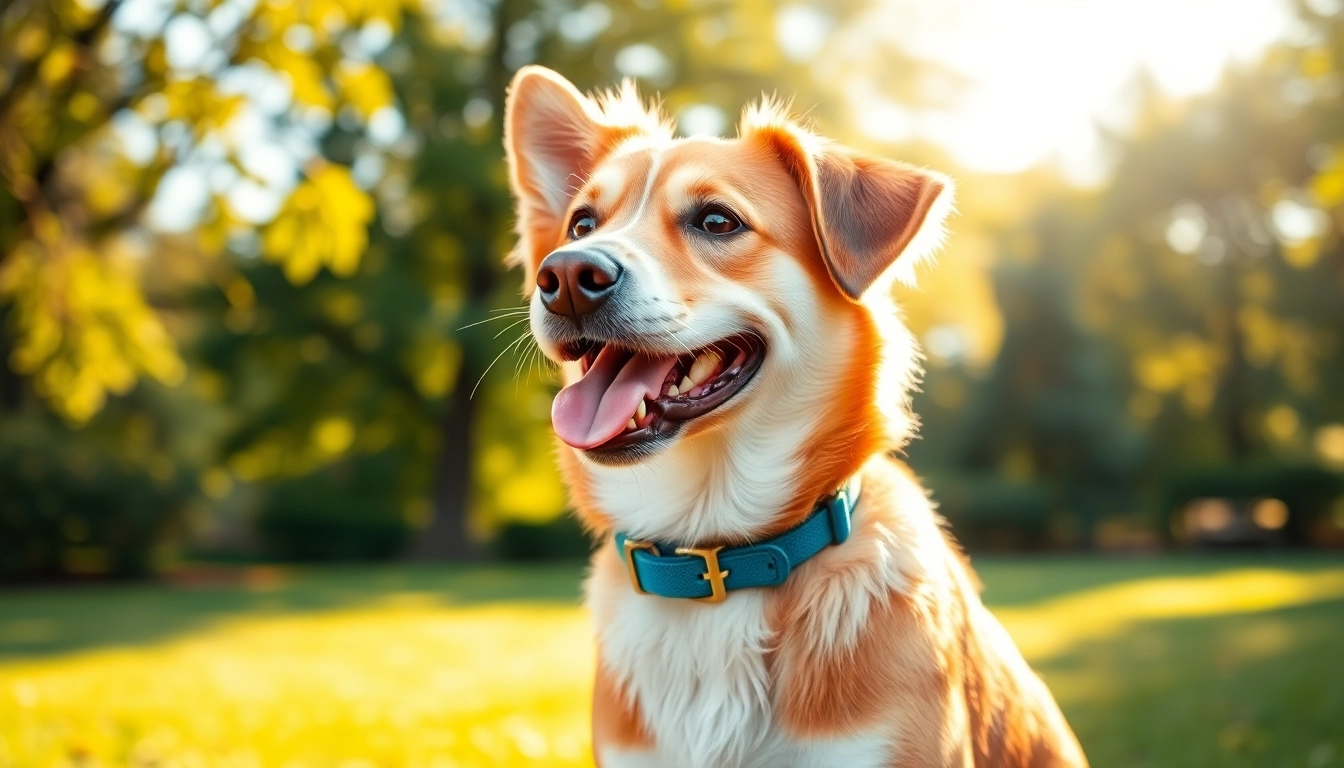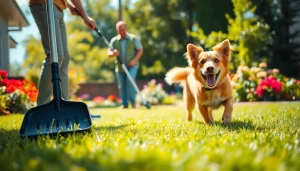Choosing the Best Dog Collars for Style, Comfort, and Safety
Understanding Different Types of Dog Collars
Selecting the right collar for your dog is more than just a style choice; it’s about safety, comfort, and functionality. The variety of best dog collars available today caters to different needs and situations. Below, we will explore the different types of dog collars available and the unique advantages each offers.
Flat Collars: Everyday Choices for Your Pup
Flat collars are perhaps the most common type of collar you’ll see on dogs, and for good reason. These collars are versatile, simple, and easy to use. Made from a variety of materials, including nylon and leather, flat collars often come adorned with vibrant colors and patterns. They are primarily designed to hold your dog’s identification tags and are suitable for everyday wear.
While flat collars can be effective, they do have limitations. For instance, they may not be the best option for dogs that pull or slip out of their collars easily. To maximize safety, it’s important to choose the right style and material based on your dog’s behavior and lifestyle.
Martingale Collars: Safety for Slip-Prone Dogs
Martingale collars are a fantastic choice for dogs that have a tendency to slip out of their collars. Designed to tighten slightly when pulled, this collar provides added control without choking. This is especially beneficial for breeds with narrow heads, such as Greyhounds or Whippets, who might easily escape a flat collar.
The Martingale collar comes in a variety of designs and materials, allowing for both comfort and style. It’s important to adjust the collar properly to prevent injury while ensuring that it serves its purpose effectively. When fitted correctly, it can provide both safety and comfort during walks and training.
Head Collars: Training Tools for Aggressive Pullers
Head collars, also known as head halters, are excellent for training dogs that have trouble walking on a leash without pulling. These collars work by gently guiding the dog’s head, allowing the handler more control without exerting too much force. While they may look similar to muzzles, they are comfortable for dogs and can be effective training aids.
It’s important to note that head collars can take some getting used to for your dog. Training with positive reinforcement and patience is essential. The goal is to teach your dog that walking without pulling is rewarding, making the head collar a valuable tool in your dog-training arsenal.
Essential Factors to Consider When Selecting Dog Collars
Choosing the right collar involves careful consideration of several key factors, ensuring that it not only looks good but also meets your dog’s specific needs. Here are the major aspects you should consider.
Material: Durability and Comfort
The material of the collar is critical to both the comfort of your dog and the longevity of the product. Common materials include:
- Nylon: Lightweight, strong, and often available in a variety of colors, nylon collars are a popular choice.
- Leather: Durable and elegant, leather offers a classic look but may require more maintenance.
- BioThane: A synthetic material that looks like leather but is water-resistant and easy to clean.
When selecting a material, consider your dog’s activity level and any allergies they might have. A collar that is comfortable and fits well will enhance your dog’s experience during walks or playtime.
Size and Adjustability: Ensuring a Perfect Fit
The size and adjustability of the collar are crucial for comfort and safety. A collar that is too tight can cause choking or injury, while one that is too loose can slip off. Many collars come with adjustable features, which can be beneficial for growing puppies or dogs that fluctuate in weight.
To ensure a perfect fit, consider measuring your dog’s neck carefully and consulting size charts provided by manufacturers. Remember, a well-fitted collar should allow you to fit two fingers comfortably between the collar and your dog’s neck.
Design and Functionality: Style Meets Purpose
While functionality is paramount, many dog owners also prioritize aesthetics in collar selection. The market today offers an array of stylish designs, patterns, and colors. From floral prints to reflective options for nighttime safety, the choices are virtually endless.
However, while style is important, it should never compromise the collar’s functionality. A collar should clearly signify your dog’s identity and help prevent them from escaping. Consider practical features like clip-on attachments for ID tags, leashes, and even bells for added safety.
How to Measure Your Dog for the Best Collar Fit
Accurately measuring your dog is an essential step in finding the perfect collar. Here’s how to do it right.
Tools You’ll Need for Accurate Measurement
Before you begin measuring, gather the following tools:
- A flexible measuring tape (or a piece of string that you can measure afterward)
- A pen and paper for noting down measurements
Having these tools handy will simplify the measuring process, ensuring you get precise results without added frustration.
Step-by-Step Measuring Instructions
- Make your dog sit calmly so that you can measure comfortably.
- Wrap the measuring tape around the base of your dog’s neck, where the collar will sit.
- Ensure the tape is snug but not tight; you should be able to fit two fingers comfortably underneath.
- Take note of the measurement in inches or centimeters.
- If using a string, mark the point where it overlaps and measure it against a ruler.
This simple process ensures that you select a collar that is neither too loose nor too tight, promoting comfort and functionality.
Common Mistakes to Avoid During Measurement
While measuring for a collar may seem straightforward, mistakes can easily occur. Here are some common pitfalls to avoid:
- Neglecting to account for thick fur, which can lead to underestimating neck size.
- Measuring too far down the neck; always stick close to the top where the collar will rest.
- Forgetting to double-check measurements if fitting a growing puppy.
By avoiding these common errors, you will ensure that your dog’s collar fits perfectly from the start.
Maintaining Your Dog’s Collar for Longevity
Once you’ve chosen the right collar, keeping it in good condition is essential for both safety and aesthetics. Here are some tips to extend the life of your dog’s collar.
Cleaning Tips to Keep Collars Fresh
Routine cleaning is necessary to prevent the buildup of dirt, odor, and bacteria. Here are some cleaning tips based on collar materials:
- Nylon: Hand wash with mild detergent and water, then air dry. Avoid machine washing, which can cause fraying.
- Leather: Use a damp cloth to wipe away dirt and follow with a leather conditioner to maintain its quality.
- BioThane: A simple mixture of soap and water will suffice; rinse thoroughly and dry.
Regular cleaning keeps your dog’s collar safe and looking its best.
When to Replace a Worn-Out Collar
Collars, regardless of material, have a finite lifespan. Knowing when to replace your dog’s collar is crucial for ensuring safety. Signs that it may be time for a replacement include:
- Visible fraying or wear
- Cracks or tears in the material
- The buckle is damaged or doesn’t function properly
If you notice any of these issues, it’s time to invest in a new collar to maintain safety and security.
Identifying Signs of Wear and Tear
Regularly inspecting your dog’s collar can help you catch wear before it compromises safety. Look for:
- Faded colors or patterns
- Changes in elasticity, leading to a looser fit
- General signs of wear that indicate age
Being proactive about wear and tear not only keeps your pet safe but can also save you money in the long run by preventing more significant issues.
Top Recommendations for the Best Dog Collars in 2023
With so many options available, it can be daunting to choose the right collar. Below are some top recommendations for the most popular and reliable dog collars available this year.
Review of Popular Brands and Their Features
Several brands stand out in the dog collar space due to their quality, functionality, and customer reviews. Here’s a breakdown of some favorites:
- Blueberry Pet: Renowned for their durable designs and vibrant colors, Blueberry Pet collies feature a strong buckle and adjustable fit.
- PetSafe: Specializing in training collars, PetSafe offers Martingale collars that are great for training and everyday wear.
- Ruffwear: Perfect for adventure-loving dogs, Ruffwear collars are made from high-quality materials designed for durability in any environment.
Choosing a trusted brand ensures you are investing in your dog’s safety and comfort significantly.
Budget-Friendly Options for Every Dog Owner
You don’t have to break the bank to provide your pet with an excellent collar. Many affordable options maintain quality and function. Some recommendations include:
- AmazonBasics Collars: Offering basic functionality at an incredibly low price point is their main selling point.
- PetFusion: Known for their affordable price and solid materials, these collars meet essential safety standards without the premium price.
- Gooby: Specializes in lightweight collars ideal for small breeds, offering a blend of affordability and style.
Ultimately, with a little research, any dog owner can find an excellent collar that fits their budget.
Customer Favorites: What Real Owners Recommend
The best feedback often comes from actual dog owners. Here are a few collars frequently recommended by customers:
- The PetSafe Easy Walk Harness: For training pullers, this harness has received rave reviews for comfort and ease of use.
- Kurgo Tru-Fit Smart Harness: This option offers safety features like a crash-tested design, making it popular among safety-conscious owners.
- Reddot Collars: Owners praise their aesthetic designs combined with comfort and durability, making them perfect for both casual and active dogs.
Your peers can be a great resource when assessing which collar may be the best fit for your dog.



